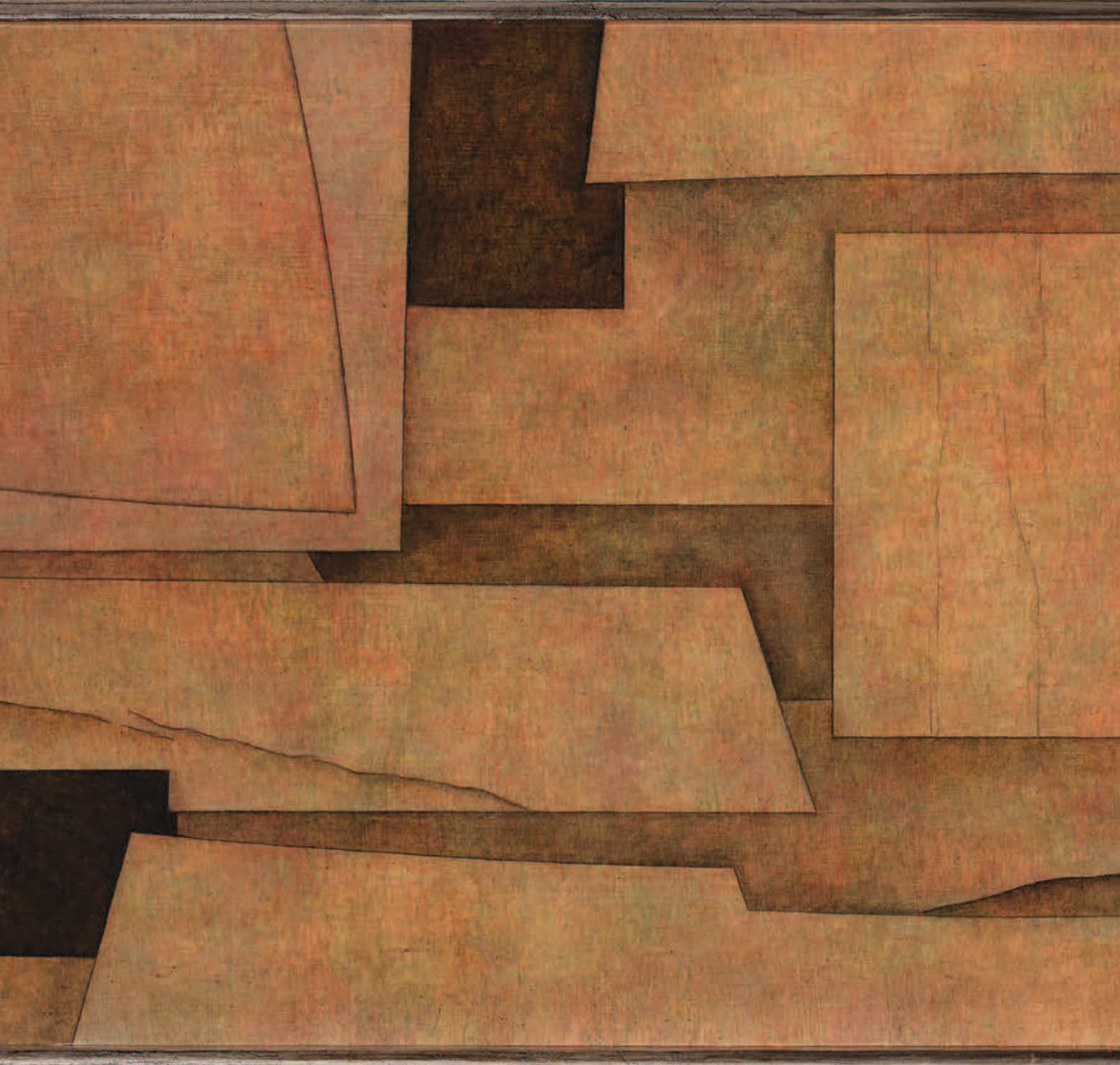Boceto
Gunther Gerzso
Sketch
Following the artistic and existential torment (splendor notwithstanding) that afflicted Gunther Gerzso in his so-called “Greek period” of the late 1950s and mid-1960s, he began to deploy his classical vocabulary as a rigorous abstract painter. With its linguistic economy, discreet size, and elongated format, emphasizing the phenomenology of the landscape, Boceto can serve as a benchmark for his mature language.

The piece’s modest dimensions contain key discoveries from at least the previous quarter-century of his painting: the allusion to a confined space submerged in the dark background, with large geometric shapes enclosing the forms in the foreground, alluding to the roundness of the body and traversing cracked surfaces that evoke, in turn, antiquity and violence.
The deep red and green iridescence of the masses and walls—colors representing the ghosts of jungles and blood—would become one of the painter’s most frequently recurring palettes. He went on to refine them in several series in 1967, all acrylic and pencil on paper: Paisaje [Landscape], Huracán [Hurricane], Paisaje en azul [Landscape in Blue], and Sin título (paisaje verde) [Untitled (Green Landscape)]. These culminated in different versions of one of his finest paintings from the 1970s: La mujer de la jungla [The Woman of the Jungle]. It is ironic that Gerzso chose a term alluding to a preparatory work, a study: in retrospect, this painting synthesizes some of the finest painted work in the second half of the twentieth century.
GUNTHER GERZSO (1915–2000)
Boceto, 1965
Sketch
Oil on chipboard
Acquisition, 2018


